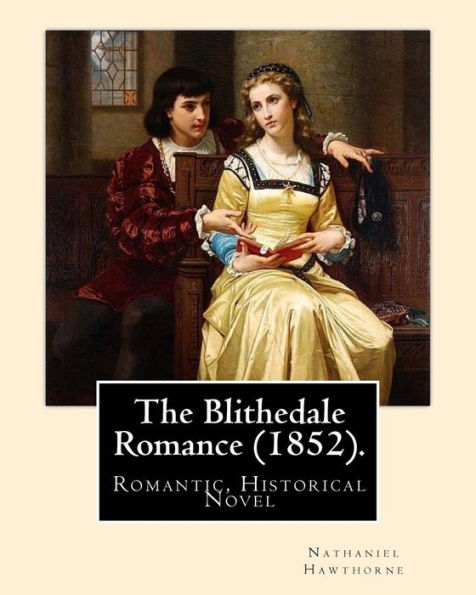The Blithedale Romance (1852) is Nathaniel Hawthorne's third major romance. In Hawthorne (1879), Henry James called it "the lightest, the brightest, the liveliest" of Hawthorne's "unhumorous fictions." Plot summary[edit] The story takes place primarily in the utopian community of Blithedale, presumably in the mid-1800s. The main character, Miles Coverdale, embarks on a quest for the betterment of the world through the agrarian lifestyle and community of the Blithedale Farm. The story begins with a conversation between Coverdale and Old Moodie, a character who reappears throughout the story. The legend of the mysterious Veiled Lady is introduced; she is a popular clairvoyant who disappears unannounced from the social scene. Coverdale then makes the voyage to Blithedale, where he is introduced to such characters as Zenobia and Mr. and Mrs. Silas Foster. At their first community dinner they are interrupted by the arrival of Hollingsworth, a previous acquaintance of Coverdale's, who is carrying a frail, pale girl. Though Hollingsworth believes the girl (whose age is never clarified) is an expected guest, none of the Blithedale citizens recognize her. She immediately develops a strong attachment to Zenobia, and reveals her name to be Priscilla. Soon after, Coverdale becomes severely ill and is bedridden. During his sickness, he believes he is on the brink of death and develops a closeness with Hollingsworth due to their anxiety-ridden situation and discussion of worldly ideals. Hollingsworth and Zenobia take care of him, and he returns to health shortly. As he recovers and spring comes, the residents of the community begin to work the land successfully and prove to their neighbors the plausibility of their cause. Priscilla starts to open up, and relationships between the other characters develop as well. Tension in the friendship between Coverdale and Hollingsworth intensifies as their philosophical disagreements continue. Meanwhile, Zenobia and Hollingsworth become close and rumor flies they might build a house together. Mr. Moodie makes a reappearance and asks about Priscilla and Zenobia for reasons to be revealed later. Coverdale then meets a stranger who turns out to be a Professor Westervelt. Westervelt also asks about Zenobia and Hollingsworth. Coverdale does not like the Professor, and when he is retreating in a tree he overhears the Professor talking to Zenobia and implying that they have a prior relationship. At this point, the narrator of the story briefly switches to Zenobia as she tells a tale entitled "The Silvery Veil." She describes the Veiled Lady and her background, though it is never revealed whether her version of the story is true or not. After switching narration back to Coverdale, the story proceeds to Eliot's Pulpit, a place of rest and discourse for the four main characters (Coverdale, Hollingsworth, Priscilla, and Zenobia). There they discuss women's rights, and Zenobia and Hollingsworth agree, against Coverdale, on a more misogynistic point of view. Their disagreements intensify the next day when Hollingsworth and Coverdale discuss their hopes for the future of Blithedale. They disagree so thoroughly that Coverdale renounces Hollingsworth and effectively ends their friendship. A turning point in the novel, the drama culminates with Coverdale's leaving the farm and returning to the city. He there shows a sort of voyeurism, peeping through hotel windows at a young man and another family. Whilst peeping, he spies Zenobia and Westervelt in another window..... Nathaniel Hawthorne ( born Nathaniel Hathorne; July 4, 1804 - May 19, 1864) was an American novelist, dark romantic, and short story writer...............




